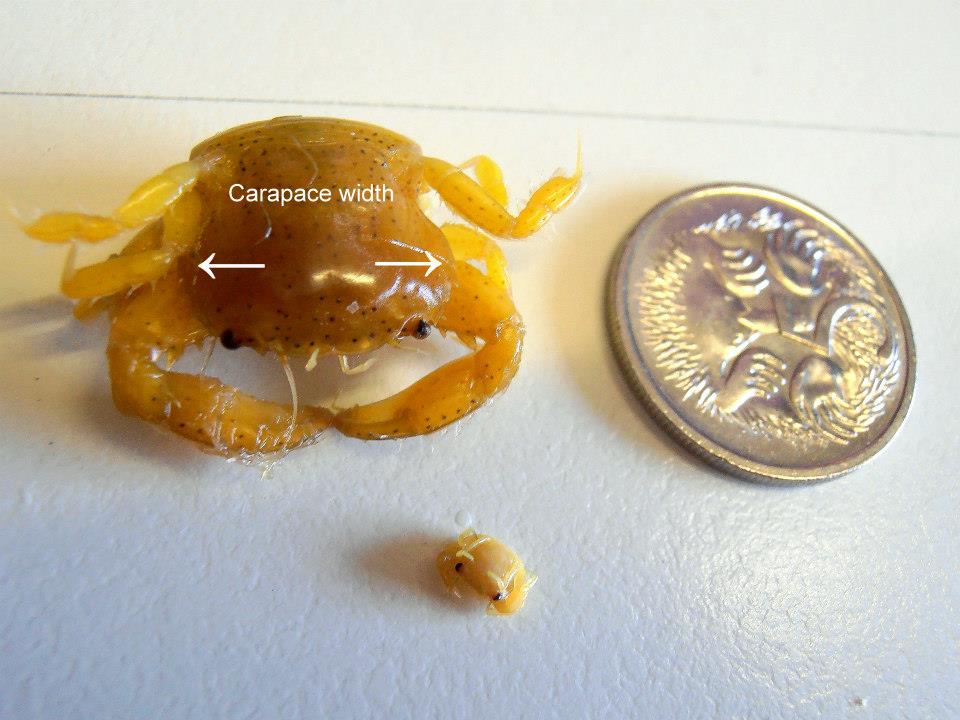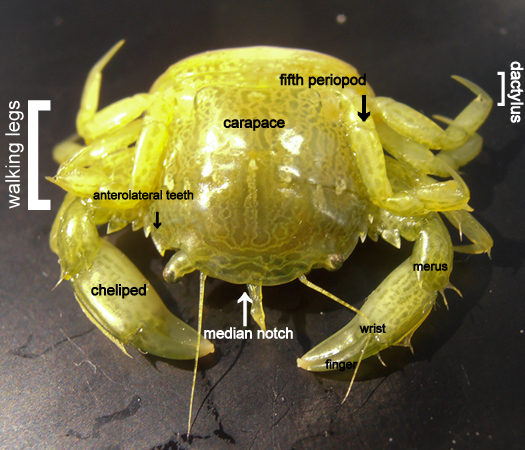Physical Description
Size
The size of crabs from this study (see ecology) had a carapace width that ranged from 3mm-13mm. Barnard (1957) had specimens that ranged from 7-8 cm long and 8-9 wide and the larger specimens from Calman (1900) had carapace lengths of 12.5mm and 15.5mm.

Comparison of large C. rotundifrons individual and small individual to an Australian five cent coin. Note than specimens have been bleached due to preservation in ethanol solution. Photo by Philippa Jenkins.
Colouration
Caphyra rotundifrons is a lime green colour similar to that of the algae it is found in, Chlorodesmis fastigiata. The abdomen is a pale cream-yellow colour. See below picture for typical colouration and pattern.
Key Features
Carapace:
- Width and length similar
- Frontwide with axial/median notch
- Surface smooth or microscopically granulated
- Anterolateral spines/teeth – 2-4
- Front can be either biolobed or not biolobed
Periopods
- Fifth leg has claw like dactylus (end)
- Dactylus of fifth leg is longer than prepodus and is slender
- Fifth legs bend over carapace
- Walking legs have feathery hairs
- Relatively long in comparison to the rest of Caphyragenus
Chelipeds
- Double keels on wrists and hand
- Single keels on inner arm and finger
- Merus has three spines
Above information from Karasawa et al. (1008), Vannini & Innocentri (2000), Barnard (1957), Stephenson and Campbell (1960) and Gordon (1941).

Picture of C. rotundifrons identifying external morphology. Note the colouration and patterns on carapace, pleopods and chelipeds. Photo by Philippa Jenkins.
|